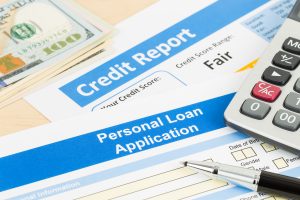It’s important to understand your fair access to credit
July 25, 2022
When someone doesn’t have access to reasonably priced credit, that presents challenges for reaching homeownership, purchasing reliable transportation, paying for education or training, and building assets.
When I first started using credit, it was exciting and intriguing to learn how I could build and improve my credit over time. At that time, I never thought about how my personal characteristics (e.g., age, accent/nationality, race, gender, etc.) could be used against me. I became interested in fair access to credit several years ago when I started paying closer attention to federal and state guidelines for obtaining credit.
Fair credit and credit discrimination
Unfortunately, we don’t all have equitable access to credit. Many minorities and low-income families have fewer chances of getting a loan and may pay higher costs for debt compared to their counterparts (Weller, 2009).
So, how does this type of discrimination occur? According to the National Consumer Law Center (NCLC), “unfair credit discrimination still permeates the American marketplace” and affects consumers’ financial well-being. It happens when lenders/creditors engage in practices (intentionally and unintentionally) that restrict, deny or block access to fair credit.
When you think about credit, you’re probably thinking of borrowing money or having the right to borrow money to buy goods and services to use as and when you need them (CFPB). However, unfair practices create barriers to credit. This means that all people don’t have the same access to borrowing money to buy goods or services when they need them.
Signs of credit discrimination
You can often sense when you are being treated differently. Trust your intuition. If you’re unsure, here are some warning signs of credit discrimination from the Consumer Financial Protection Bureau (CFPB):
- Treated differently in person than on the phone
- Discouraged to apply for the line of credit
- Hear negative comments about gender etc. from the lender
- Offered more than you qualified for based on income and background information provided to the lender
- Denied credit, with no reason given (no Adverse Action Letter given to you)
- Terms and arrangements that sound too good to be true
- Pressured to sign loan documents without fully understanding the responsibilities
This list, of course, is not exhaustive! Therefore, the next time you are working with a lender, make a note of your experiences. Pay attention to your interactions and those around you.
Effects of credit discrimination
When you don’t have access to reasonably priced credit, then achieving homeownership, purchasing reliable transportation, paying for education or training, or building assets is challenging (NCLC). Credit discrimination can affect your livelihood and goals for financial freedom. It perpetuates systemic inequities that has and continues to affect generations.
What you should know and can do
As a consumer, there are legal protections to help you understand your rights. Fair lending practices support equitable access to credit, and financial institutions are accountable for establishing effective procedures and policies that show transparency and non-discrimination in all aspects of credit transactions. While creditors may ask or request information about your income, debt, credit history, and other relevant personal characteristics, they are prohibited from making credit decisions based on these protected categories under the Equal Credit Opportunity Act (ECOA): national origin, race, employment, religion, housing, gender, disability, age, and education. If you or others in your life have experienced discrimination, there are protection agencies here to help.
- Learn How the Complaint Process Works: consumerfinance.gov/complaint/process/
- File a Consumer Complaint: ftccomplaintassistant.gov/
- National Fair Housing Alliance: nationalfairhousing.org/
Fair access to credit means that we all have equitable opportunities to obtain credit to use how and if we desire it. To hear some case examples of credit discrimination and what to do if you’re denied credit, listen to our Let’s Talk Money webinar on Fair Access to Credit, go.illinois.edu/TalkMoneyPlaylist.







